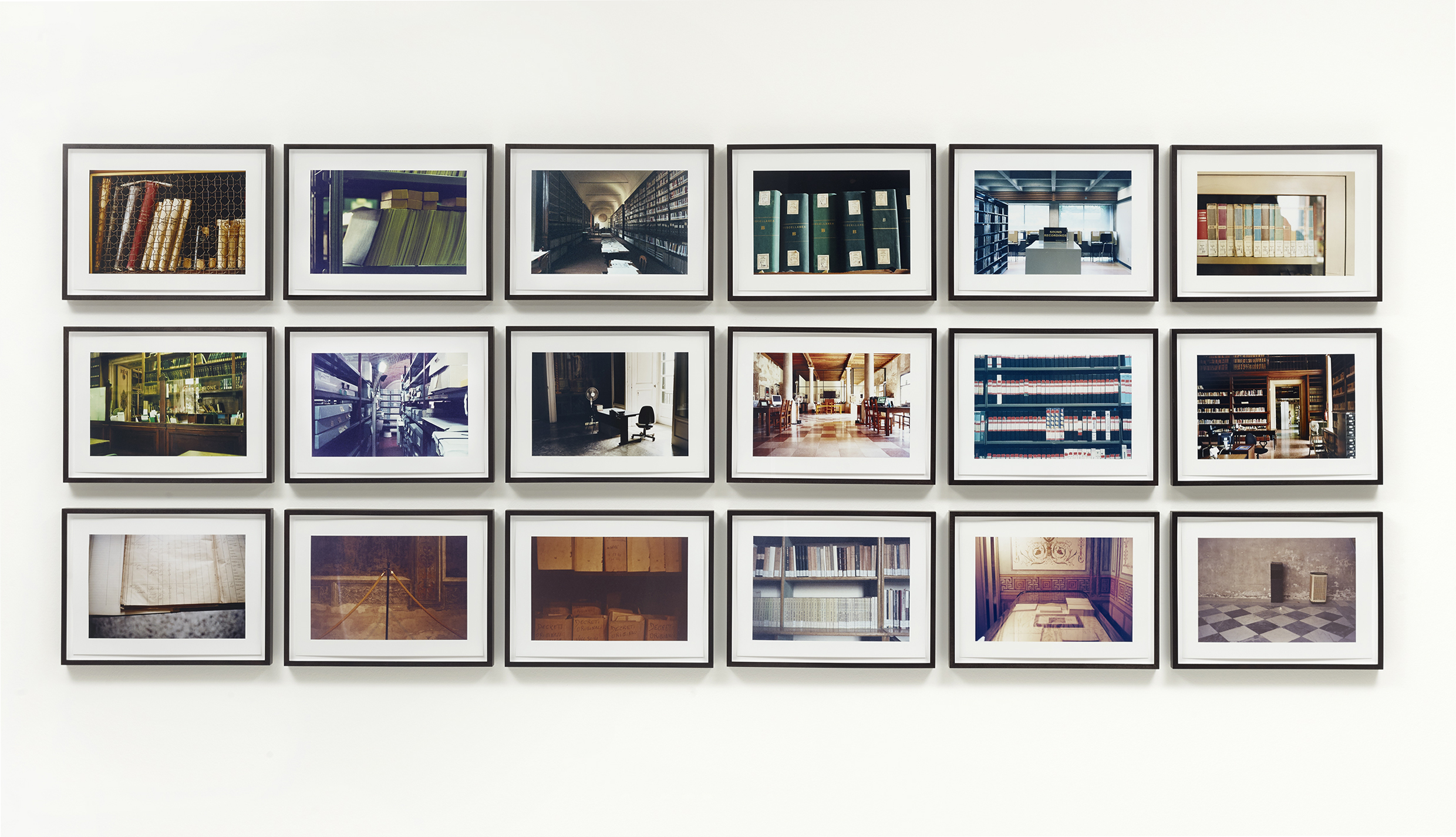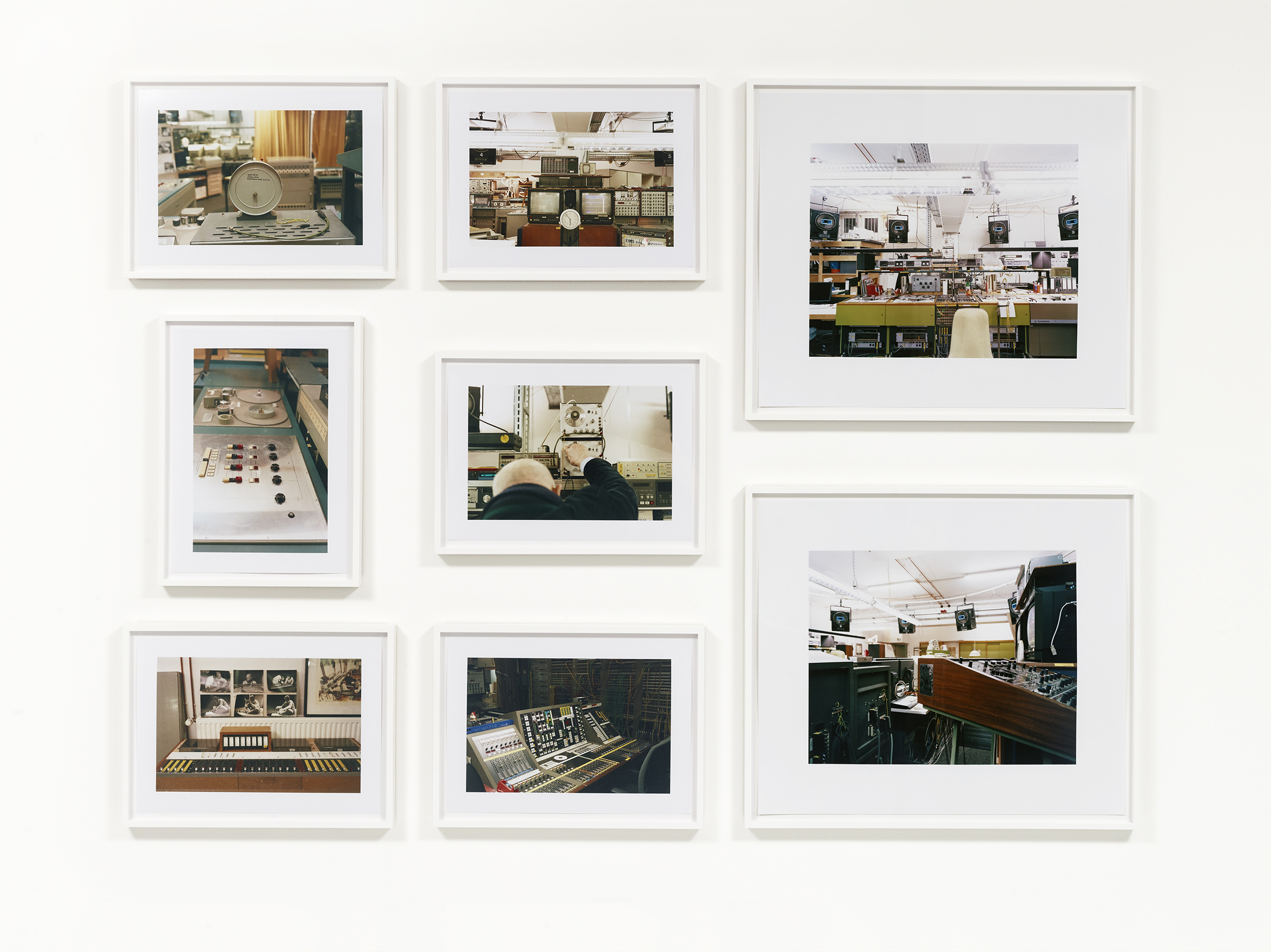The invitation for this exhibition - a framed illustration of darkroom equipment hanging on a wall - immediately signals Luke Fowler’s complex relationship to photography and loyalty to analogue technology. The casual shot using available light implies a resistance to performing the role of a classic photographer, leaving normally unwanted effects like inconsistencies in grain and colour, light smudges, under and over-exposures and other photographic “defects” to emphasize his materialist approach. As in his film works, which question the rhetoric of the conventional documentary film, these grouped image constructions point to the artifice of the medium. The fact that the picture was taken at the home of Italian photographer Luigi Ghirri, offers further clues to Fowler’s methods. His uninflected photographs, like Ghirri’s seemingly unfinessed, quiet observations, are rigorously precise impressions of reality. Throughout the exhibition Fowler highlights the relationships of objects to their display. Whether in street sellers’ bookstalls, archives or museums, the cultural labour of constructing a context for isolated artifacts is brought to the fore.
The exhibition features photographic assemblages, each arranged in a grid of loosely associated pictures. Culled from the artist’s personal archive, the colour photographs are organized into typologies and subjects that initially suggest the logic and intentionality of an archive, yet his micro-narratives remain elusive. Like the archeological field notes of an itinerant journalist, Fowler chronicles the incidental and prosaic. Once these annotations are clustered into a collage- the impulse to map a definitive response to the outside world is put into question.
In one work that focuses on the public use of photographic images, Fowler takes the idea of re-photography beyond references to production. Here he identifies how photographic blow-ups of archival imagery are exploited commercially as a means of nostalgically invoking a romanticized past.
He engages the flux of urban life in streets, shopping malls, and museums with insightful scrutiny, refusing the alienated gaze of the flâneur.
His observations of the material world are arranged into idiosyncratic categories like “a social history of shopping centers in Central Scotland.” Here, such an obscure topic becomes a microcosm of cultural conditions. Fowler is drawn to decidedly unremarkable and transitional places, to oddities and historical disjunctions. Even his depictions of vernacular architecture, often celebrated as everyday ingenuity, are so understated and banal as to be almost unnoticeable. It is precisely this state of disappearance - caught between the past and the present - that interests him. Throughout the exhibition, we are made aware of the cultural histories carried by things and in their modes of display. Fowler exploits the dynamics of montage to provoke a dialectical tension within his constellations.
The title of this exhibition, The Presence of History in the Music of Today, is itself borrowed from a 1959 Darmstadt talk given by the Italian composer Luigi Nono, in which Nono famously criticized the formal strategies of his colleagues Cage and Stockhausen. By invoking this specific historic moment amongst others, Fowler is suggesting an alternative reading of our social and cultural landscape and hence by extension his own collected, photographic fragments, presented here.
(Helga Pakassar)






